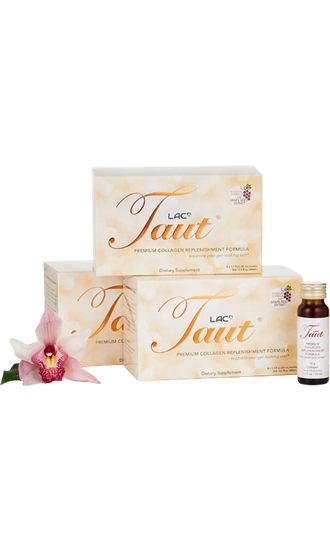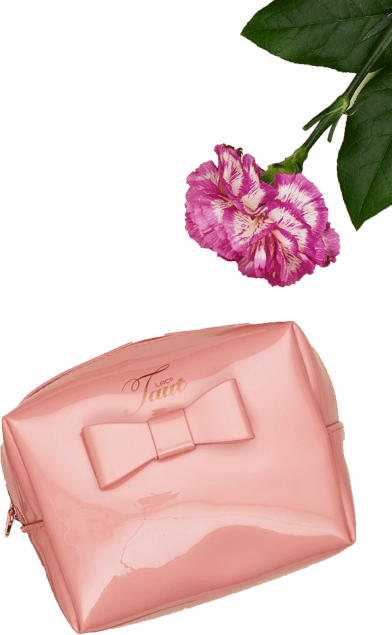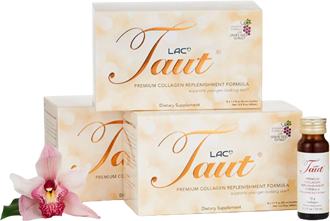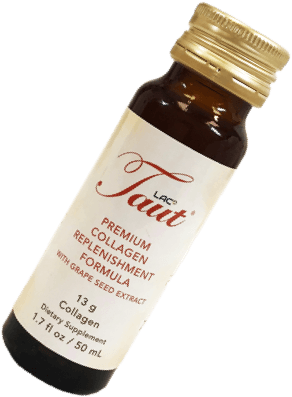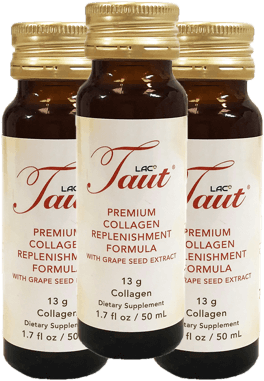How to Use Hyaluronic Acid: Serum Uses & When You Can Apply It On Your Face Everyday

Hyaluronic acid supplements have become the new it-girl in the realm of cosmetics. While most of us rush to the ingredients lists on the back of beauty products to make sure it’s there, many don’t actually know what it does or even how to use it.
Also referred to as HA for short, hyaluronic acid is a magical mystery potion that can help put the spring back in your step (or your skin in this instance!). It naturally infuses your skin, restoring volume, and giving you that soft luscious look you’ve been longing for.
If you’re like us and you’ve been looking for the best way to incorporate HA into your skincare routine, this article is perfect for you!
The truth is, not all hyaluronic acid treatments are the same. Most importantly, the way you apply your serum will have a huge impact on the results you achieve. So, without further ado, here’s everything you need to know about how to use hyaluronic acid in your daily regime.
What Is Hyaluronic Acid?
Most of us have been told that hyaluronic acid is a wonder ingredient but, what is it?
Well, without taking you back to the chemistry lessons you once had at school, hyaluronic acid works like a sponge that soaks up water and helps the dermis stay hydrated and plump. It’s a naturally occurring molecule found in our skin, joints, and eyes that helps us retain collagen, and in turn, moisture.
Also referred to as hyaluronan, the ordinary HA is a clear substance that keeps our body tissues lubricated and moist. It promotes healthier, more supple skin and soft, plump lips. It also plays a key role in wound healing and can, therefore, be helpful in treating acne breakouts and acne scarring.
Thanks to its lubricating qualities, hyaluronic acid can also help relieve joint pain. In fact, hyaluronic supplements are commonly used by people with osteoarthritis, a type of degenerative joint disease.
Last but not least, this gooey substance is commonly found in eye drops as it has been shown to be effective in treating dry eye syndrome thanks to its excellent ability to retain water.
What Makes Hyaluronic Acid a Wonder Ingredient?
The ordinary person stores 50% of their HA levels in their dermis. But, as we age and with sun exposure, these levels decrease leaving space for wrinkles, fine lines, and sagging skin. This is why companies across the world are adding skin-plumping hyaluronic acid to their cleansers, oils, masks, and beauty supplements.
The amazing jelly-like stuff acts as a humectant. This means it pulls water from the environment and absorbs it into the skin, keeping it well hydrated. The results? Plumper, younger-looking skin, with fewer fine lines and wrinkles.
The ordinary hyaluronic acid serum can hold about 1,000 times its weight in water. It is essentially a heavy-duty sponge that holds moisture and delivers it into your dermis.
This means goodbye dry, tight feeling skin, and hello firm, dewy complexion!
Who Can Use Hyaluronic Acid?
Hyaluronic acid is a miracle ingredient for more than its ability to moisturize the skin. The ordinary jell-O-like humectant can be used by just about everyone. Let's take a closer look:
Aging Skin
Particularly great for more mature, dry skin because of its incredible anti-aging properties, HA can help restore volume, reducing the visibility of fine lines and wrinkles. It helps the skin retain moisture which will naturally improve your skin's elasticity while boosting its firmness.
Sensitive Skin
Hyaluronic acid acts as a lightweight formulation that can provide the necessary moisture without feeling clumpy on the skin. It also has calming and soothing properties making it great for those with more sensitive skin.
Acne-Prone Skin
The wonders of HA don't stop there! No, this miracle ingredient's soothing properties mean it can actively help reduce the visible appearance of redness caused by acne and acne scarring. Its protective properties also keep acne at bay. This is because it creates a strong barrier from external pollutants.
Young Skin
There is no better time than the present. Who ever first said this wasn't talking about hyaluronic acid but they could've been! HA is perfect for virtually any age group. This is because it works by hydrating the skin at a deeper level.
Whether you're experiencing the first signs of aging or not, who doesn't want to maintain a youthful complexion, right? Well, HA is the key to plump, hydrated skin for years to come so starting now definitely won't cause any harm.
How to Spot HA on Your Product’s Label
When it comes to cosmetic ingredient labels, we often find ourselves questioning our IQ. The list of long, complicated names can be overwhelming and hard to get the hang of. The industry does everything it can to confuse us and, finding hyaluronic acid on these labels is no exception!
Thankfully, many cosmetics and skincare companies today are proud of their use of HA in their beauty products meaning they list it clearly. However, HA and its various forms go by many names. Some of these include:
- Glycosaminoglycan
- Hyaluronan
- Sodium hyaluronate
What Other Ingredients Does Hyaluronic Acid Work With?
While the ordinary hyaluronic acid works as an awesome standalone ingredient in beauty formulas like creams, serums, and other beauty products, companies across the world are including it as a part of a much broader list of components. Here are some of the most popular ones:
Alpha Hydroxy Acids (AHAs)
Today, many of the ordinary skincare and beauty solutions found on the shelves combine AHAs such as glycolic acid with HA. This is because if you use hyaluronic acid with AHAs, you'll benefit from both an exfoliant as well as a hydrating layer of protection all in one serum. These beauty formulas remove the top dead layer of skin, clean out the pores, and cover the dermis with a protective sheet that keeps our skin plump and free of fine lines and wrinkles.
Vitamin C or Ascorbic Acid
It is now common to see hyaluronic acid products with vitamin C serum or ascorbic acid as this vitamin promotes collagen production. Pairing the HA with vitamin C, therefore, provides a hydrating, refreshing, and brightening formula that can help combat the early signs of aging.
Retinol
Retinol is one of the "in" anti-aging ingredients of the beauty and skincare world today. It helps us turn over the top layer of skin, reducing the appearance of fine lines and wrinkles. Thanks to its ability to increase collagen production, retinol is also a fantastic solution for anyone who would like to address uneven skin tone or acne.
When you use hyaluronic acid with retinol, you'll achieve a fuller more youthful complexion that is hydrated, even, and above all, glowing!
Antioxidants
The ordinary hyaluronic acid is an effective antioxidant in itself. However, many skincare and beauty products now combine it with other natural ingredients that can help fight free radical damage from external pollutants as well as from other skin care ingredients.
While vitamin C also has antioxidant properties, HA is often found with natural ingredients such as grapeseed extract. Packed with bioflavonoids, this ingredient helps further protect the skin and collagen at a cellular level.

Collagen
Hyaluronic acid in itself can help us retain more collagen as we age. However, combine this substance with additional collagen and hyaluronic acid, and you’re left with a powerhouse anti-aging formula that helps reduce the visibility of fine lines and wrinkles while also preventing volume loss in the face.
Additional Vitamins
A robust nutrient profile helps us stay fit and healthy, while also allowing us to better manage our stress levels. Unfortunately, when we become deficient in certain nutrients and we experience stress, our skin can often take a turn for the worse.
Many of the ordinary skincare and beauty products now combine HA with additional vitamins for their stress-relieving properties. These can further aid us in soothing away tension while also restoring optimal skin health.
How to Use HA The Right Way
You’re probably thinking you can simply go out and buy the first serum you see that lists hyaluronic acid on its ingredients list. Unfortunately, not all of the ordinary skincare products found on the shelves today are made the same way, and the quality of the HA in your chosen product will make a huge difference to the results you achieve.
Here are some steps you can follow when using hyaluronic acid:
Choose the Right Hyaluronic Acid Serum or Cream
The key to any skin care regime is choosing the right beauty products. Thousands of skincare and beauty products contain hyaluronic acid. From cleansers to creams, and serums, your list of choices is virtually endless.
When it comes to creams, you need to look at the concentration of hyaluronic acid in the formula. Typically, you want to look for a concentration of at least 0.1%. Anything lower than this and the results will be little to none. In fact, studies suggest that levels above 0.1% are most effective when it comes to promoting elasticity and hydration. For those with sensitive skin, aim for closer to 0.1% to avoid any irritation.
For serums, you want to choose a brand that provides a mix of molecule sizes. Traditionally, hyaluronic acid molecules are too big to penetrate the skin. Lower molecular weight HA is great for penetrating the deeper layers of the dermis and providing you with intense hydration. High molecular weight HA will provide your dermis with a protective layer from external pollutants.
Because both types of HA have their benefits, look for a serum that has a mix of molecule sizes so you can really reap the benefits. Not all manufacturers list this information on their skincare and beauty products so you may want to do a quick online search before making a final decision.
Last but not least, your skin type does matter when it comes to choosing the right hyaluronic acid treatment. If you have combination or oily skin, look for a water-based hyaluronic acid treatment. This will avoid introducing unnecessary oils into the mix.
If your skin is on the drier side, look for an oil-based serum. Used topically, oil-based HA will retain water, hydrating your cells without blocking your pores.
Test Your Hyaluronic Acid Product on Your Skin
A hyaluronic acid serum can usually be used on all skin types but, if you’re changing skincare ingredients, you should always test them before you apply them all over your face. Remember that whichever formula you choose it’ll likely have far more than just hyaluronic acid in it.
To make sure you don’t have a reaction, apply a little dab of your new face serum to a discreet area, such as behind the ear. Do this for two to three days before applying it to your face.
Cleanse & Tone Your Face
Before you apply hyaluronic acid serum, you need to cleanse and tone your face. Applying HA to dirty skin will only trap any grime in your pores, causing acne breakouts and other issues. Also, the order in which you apply your cosmetics will have a direct impact on the results you achieve.
Start by washing your face with warm water and soap that is free of harsh chemicals. You can also use a cleanser. The truth is, your face comes into contact with thousands of dirt particles and pollutants on a daily basis. These can get trapped under your skin and if they’re not cleared out before applying skincare and beauty products to it, they get stuck and can cause damage.
Once your skin is nice and clean, you’re ready to apply a toner. Think of toner as your final cleansing step. It removes any last bits of debris and soaks up any excess moisture.
Apply Your Serum
Now that you’ve chosen your product, tested it on your skin, and cleansed and toned your face, you can apply your serum. If you’re like us, you know all too well the effects of overdoing it when it comes to applying facial cream, moisturizer, and serum.
When you apply too much, the skin feels heavy, clogged, and even greasy depending on the product you use. When it comes to hyaluronic acid, a thin layer goes a long way. In fact, many women in the United States who use hyaluronic acid serums find that applying a thin layer just before applying their moisturizer gives them a dewier and smoother complexion that stays that way without ever getting too oily.
Use a Light Layer of Moisturizer
To function optimally, hyaluronic acid serum needs the right amount of moisture. The next stage when using HA is to moisturize your skin. Apply a chemical-free moisturizer to your clean face to ensure that the HA has everything it needs to lock in all of the goodness for the remainder of your day. Applying your moisturizer last will give your HA serum more time to truly work its magic as it won't be as heavily affected by external pollutants.
Common Mistakes to Avoid When You Use Hyaluronic Acid
As with all skincare products, there are some do’s and don’ts when it comes to hyaluronic acid. We talked about only applying a thin layer rather than slathering it on but what else should you know about this mystical ingredient if you want to achieve hydrated, radiant skin?
Here are three common mistakes that the ordinary person makes and that you should avoid when applying HA serum:
Mistake 1: Applying Hyaluronic Acid Without Moisturizer
We already discussed the fact that hyaluronic acid can hold a lot of water. It acts like a sponge, soaking up and holding onto moisture. So, you have to apply hyaluronic acid to skin with some form of moisture in order for it to truly work its magic.
Just think about it: if HA is applied to dry skin in a formula that doesn’t moisturize, such as toner, serum, or cleanser, it will pull moisture from elsewhere. This can cause irritation and other issues as it is likely to pull moisture from the deeper layers of your dermis, leading it to evaporate into the air.
On the other hand, when HA is added just before a moisturizing solution, it will penetrate the dermis, locking in moisture and leaving you with a plumper, more youthful complexion.
Mistake 2: Applying Hyaluronic Acid to Dry Skin
While it’s important to use hyaluronic acid with moisturizer, it’s just as essential that you apply it to damp skin. If there is little humidity in the air, the HA will pull moisture from the deeper layers and pull it to the surface of the skin. From there, it will evaporate, leaving your skin dryer and tighter than it was in the first place.
By applying your HA serum to damp skin, it will pull moisture from this reserve of water. Understanding this moisture balance will make the world of difference to your skincare routine, leaving you with the healthiest, most moisturized skin possible.
Mistake 3: Overusing Hyaluronic Acid
When you use hyaluronic acid serum, a little goes a very long way! Because of its many benefits, it’s normal for the ordinary person to adopt a “more the merrier” mentality. That said, studies show that overusing HA can lead to inflammation and redness.
Aside from using HA in moderation, the takeaway should be: use your serum at a stage where you’ll get the most benefit from it. Since we know that HA needs to be used with moisturizer on damp skin, it makes sense to use hyaluronic acid just before applying your moisturizer. By doing so, the HA will be protected from the outside world giving it more space to do what it does best!
Applying your serum just before your moisturizer will provide it with the adequate amount of hydration to offer you hours of plump, bouncy, and smooth skin.
When to Use Hyaluronic Acid
The time at which you apply your hyaluronic acid serum is just as important as the amount you use on your skin. To achieve youthful, flawless skin, you need to create a comprehensive skincare routine for both the morning and the night.
You also need to build up your HA use slowly to ensure that your skin adapts to the product and doesn’t end up irritated or uncomfortable. Here are the two steps you should take to transition into the world of regular hyaluronic acid use:
Use Hyaluronic Acid in the Morning First
If you’re new to the world of HA, start by using it as part of your morning routine. By applying it after your cleanser, toner, and moisturizer, the serum will provide you with an additional layer of hydration, softening your skin throughout the day.
The barrier will also block external pollutants from infiltrating your pores, reducing the chance of breakouts, and slowing the natural skin aging process.
Later, Start Applying It at Night as Well
Once your skin has adapted to your new product, you can start applying your serum as part of your night time skin care regimen as well. Used at night, HA will help replenish any moisture that you lost during the day while once again providing you with an extra protective layer.
Can HA Replace Collagen Fillers?
Hyaluronic acid was first introduced into the beauty realm as a form of filler, most notably as Juvederm and Restylane. Because many of the molecules in HA serums were too large to be absorbed into the skin, they were quickly introduced as fillers, replacing collagen injectables in many cases.
In addition to lasting longer, these HA fillers were less likely to cause adverse reactions. They provide subtle results that last anywhere between three months and a year. What makes this form of filler especially unique is that it is reversible.
With the use of the enzyme hyaluronidase, dermatologists can dissolve the filler if their patients don't like the effects.
Are There Any Side Effects or Drawbacks to Using HA
Hyaluronic acid is a natural compound found in our bodies. While the HA found in cosmetics is often artificially made, it contains no real known downfalls or side effects regardless of your skin type, meaning it can be used by just about everyone. The key, however, is to use the right quantity. When used excessively, the ingredient may cause slight redness or inflammation in some people.
It’s worth noting that HA’s natural purpose is not simply to hydrate the skin. Some brands claim that hyaluronic acid is a natural moisturizer but, more often than not, the molecules in the ingredient are too big for the skin to absorb.
In actual fact, HA sits on top of the skin, drawing water and moisture from the air and the other beauty products used during your skincare routine, providing temporary benefits to the dermis.
The key to optimal absorption and hydration is to choose a product that incorporates different molecular weights of HA. These penetrate into the deeper layers of the dermis, allowing for longer-term effects.
Super-Hydrate Your Skin With the Right Hyaluronic Acid Supplements
At Taut Collagen, we’ve spent years developing natural beauty products that allow you to achieve glamorous, glowing skin like that of the movie stars you see on the red carpet. Better yet, our skincare products don’t include the use of any injectables!
One hyaluronic acid supplement that we’re proud to offer is our Taut Hydrate: Hyaluronic Acid Pills & Vegan Supplements.
Designed to work as a super moisture magnet, our HA supplements will plump and hydrate the deeper layers of your dermis - the layers that fillers and serums can’t access. By filling out the free spaces between the elastin and collagen fibers, HA will keep your skin pliable and limber.
But, while the ordinary hyaluronic acid formulas found on the shelves only target your skin, these Taut supplements also work wonders on the joints and eyes. That's right, the product will replenish your HA levels from within, helping you combat the first signs of aging on all fronts.
Best of all, our hyaluronic acid is made from plant sources, making it 100% suitable for vegetarians and vegans. And, combined with grape seed extract, it has the power to protect collagen from free radical damage formed at a cellular level.
You can also find it in our Taut Ultimate Transformation program below - our most popular skin loving transformation bundle!
If you’re ready to take your skin care routine to the next level, contact us today! Our team is always happy to answer any questions you may have concerning Taut’s exceptional skin care line.



